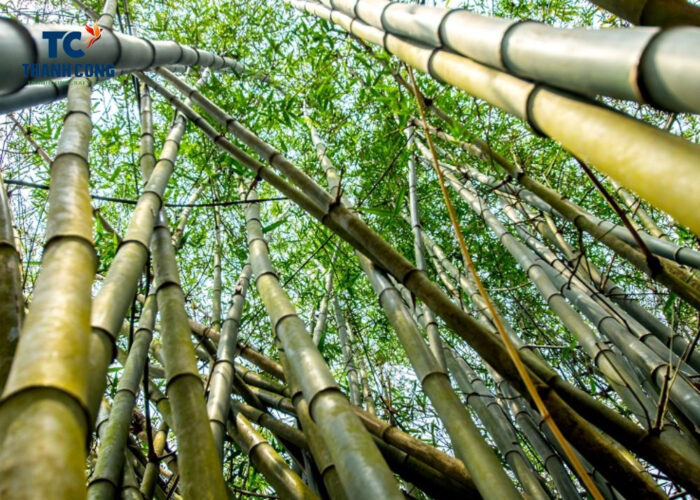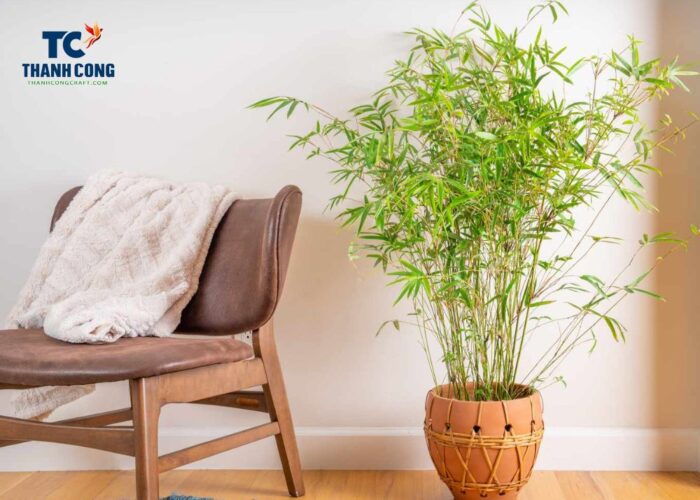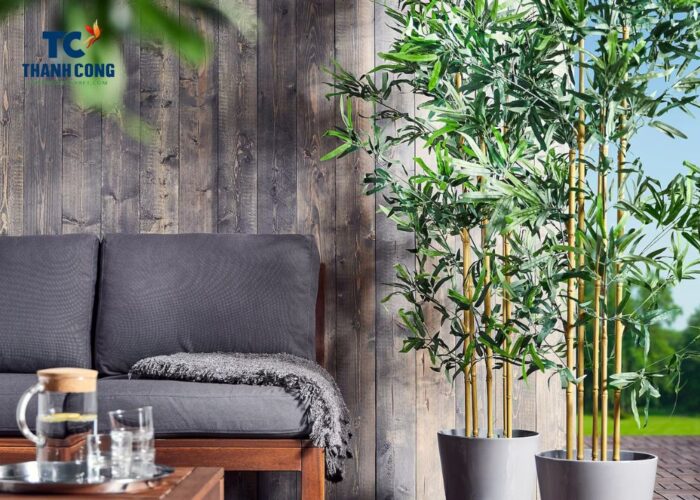The elegant and symbolic bamboo tree has long been cherished for its beauty and feng shui significance. As you bring this graceful plant into your home, the question arises: Where to place bamboo plant in the house to maximize its positive effects on your living space and well-being? In this guide, we’ll explore the art of positioning bamboo within your home to enhance its Feng Shui energy and create a harmonious living environment.
Contents
1. Bamboo what is it?
Bamboo is a woody plant species recognized for its distinctive clustered roots and hollow stems. It belongs to the Poaceae family, a group of grasses. The stem of the bamboo plant stands tall and erect, sporting a vibrant green color. The leaves, elongated and modest in size, retain their verdant hue throughout the year. The stem’s architecture is particularly remarkable, consisting of numerous nodes that create its segmented appearance. From these nodes, small shoots can emerge, potentially growing into branches or leaves. The leaves tend to cluster predominantly at the upper part of the stem, gently arching due to the flexible and relatively small tip of the bamboo.

Bamboo is renowned for its swift growth and development. Within a span of 2 to 4 years, a fully mature bamboo plant can be ready for harvesting. Flowering in bamboo is a rarity, generally taking place only after 60 to 100 years. Bamboo’s primary mode of reproduction is through its root system, rather than relying on flowers or seeds. Shoots, referred to as bamboo shoots or “măng” in Vietnamese, sprout from the root. Bamboo shoots and stems often thrive in close proximity. Bamboo is adaptable to diverse climates and soil conditions, flourishing in a variety of environments. To date, more than 1000 bamboo species have been identified worldwide.
2. Benefits of placing Bamboo plants in the house
The bamboo plant, originating from Southeast Asia, stands out as one of the most low-maintenance indoor plants. Its tropical water lily-like appearance makes it a favorite among many, and it offers a range of benefits:
- Natural Air Purification: Bamboo plays a vital role in maintaining a clean environment by naturally purifying the air.
- Bringer of Prosperity: According to legend, the lucky bamboo plant is believed to usher in wealth and good fortune into a home.
- Aesthetic Appeal: Its slender stems lend an elegant touch to any interior decor.

- Positive Energy: Homeowners are said to benefit from the positive energy and sense of security that the lucky bamboo plant exudes.
- Health and Prosperity: Placing the bamboo towards the east is thought to bring good health to the family, while pointing it southeast is believed to attract wealth and prosperity.
- Nutrient-Rich Shoots: Beyond its decorative qualities, bamboo boasts nutrient-rich shoots that contain iron, phosphorus, magnesium, fiber, and amino acids.
- Anti-Inflammatory Properties: Bamboo is also recognized for its anti-inflammatory properties.
>> See more:
3. Where To Place Bamboo Plant In The House?
- Keep the bamboo plant ideally on the east corner of the room: Keep a bamboo plant in the southeast corner of your home to attract wealth and fortune. It is believed that if you keep it here, you can succeed while facing financial challenges.
- Place bamboo plants in the center of the dining table: To foster positive energy and abundance during meals, consider placing bamboo plants at the center of your dining table.
- Place bamboo plants in bedroom: Bedrooms make an excellent home for bamboo plants. Their low maintenance and sunlight requirements make them an ideal choice to introduce greenery into your sleeping space.

- Front Door Welcoming: Bamboo represents luck, new beginnings, and family harmony. To invite these positive energies into your home, position a bamboo plant near the front door.
- Air purification and low maintenance: Bamboo plants also serve as natural air purifiers, removing toxins from the environment while requiring minimal care. They can grow to heights of two to three meters, making them suitable for various indoor locations.
By strategically placing bamboo plants in these areas, you can not only enjoy their aesthetic appeal but also benefit from the positive energies and air-cleansing properties they bring into your living spaces.
4. The feng shui significance of bamboo plant in house
Growing bamboo indoors is not just a form of interior decoration; it also carries deep feng shui meanings highly regarded in many cultures and feng shui philosophies.
Bamboo, in feng shui, is renowned for its potential to bring health, happiness, love, and prosperity into one’s life. It is common practice to grow bamboo in gardens or within office spaces to enhance positive energy, thus creating a comfortable and secure living environment.
Especially for those involved in business or commerce, the presence of bamboo generates a source of positive energy, bringing forth good luck and protection. Consequently, the business endeavors of the occupants can sail smoothly, overcoming challenging phases.
Furthermore, bamboo is considered an auspicious Feng Shui item, capable of attracting good fortune and wealth. Hence, it is a favored choice to plant small bamboo plants near entrances, whether in stores or residences.
5. Caring for Bamboo When Grown at House
Growing bamboo indoors is not just a form of interior decoration but also an investment in your living space and Feng Shui harmony. Here are some guidelines for caring for indoor bamboo:
- Bamboo prefers natural light but should not be placed directly under harsh sunlight. Choose a location with gentle natural light or artificial lighting if necessary.
- Ensure regular watering for your bamboo, but avoid over-saturating the soil. Check the soil moisture by touching the surface, and water when it begins to dry. Use filtered water or let tap water sit at room temperature.
- Choose well-draining soil with good water retention. Soil blended with bamboo or coconut coir is a common choice for bamboo.
- Fertilize bamboo every 2-3 months during spring and summer with balanced foliage and grass fertilizer.
- It’s essential to observe and prune bamboo leaves when necessary. Remove dried or damaged leaves to encourage healthy growth.
- Regularly inspect the bamboo for signs of pests or diseases. Use effective measures such as soapy water spray to eliminate pests.
6. Explore other products made from bamboo
Bamboo is renowned for its remarkable durability, resilience, smooth texture, excellent anti-slip properties, and exceptional moisture resistance that have made it a highly sought-after material today. Bamboo has the capability to completely substitute traditional wood applications without compromising the ecological balance. The demand for bamboo-based products is steadily increasing as consumers recognize the numerous benefits they offer. Some notable examples of these products include:
- Bamboo Cups Bulk
- Wholesale Bamboo Cups
- Wholesale Bamboo lampshade
- Bamboo Baskets in Bulk
- Wholesale Bamboo Baskets
- Wholesale bamboo basket
In conclusion, determining where to place your bamboo plant in the house is a decision that extends beyond mere aesthetics. It’s a strategic choice that can influence the plant’s growth, its impact on the Feng Shui energy of your living space, and ultimately, the atmosphere you create in your home. So, don’t just decorate with bamboo; harness its potential to elevate the harmony and well-being of your living environment.
If you have any further questions, don’t hesitate to send thanhcongcraft an email us at info@thanhcongcraft.com or message us at WhatsApp: +84967485411. Hope to serve you soon! Best regard!












